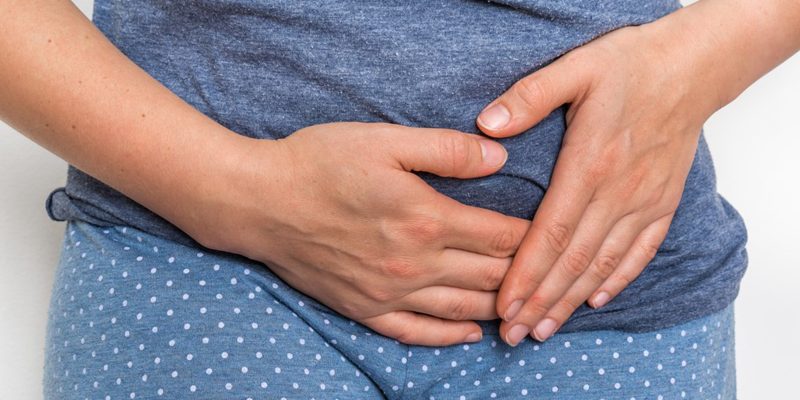 Inguinal hernia is a pathology represented by the protrusion (exit) of the contents of the abdomen (often intestinal loops) through an enlarged anatomical orifice at the level of the inguinal canal. It can be present from birth (congenital) or can occur throughout life (acquired).
Inguinal hernia is a pathology represented by the protrusion (exit) of the contents of the abdomen (often intestinal loops) through an enlarged anatomical orifice at the level of the inguinal canal. It can be present from birth (congenital) or can occur throughout life (acquired).
- What is an inguinal hernia and why does it occur?
- The main symptoms of inguinal hernia
- The evolution of inguinal hernia and medical consultation
- Treatment and recovery after inguinal hernia
- Methods of preventing inguinal hernia
What is an inguinal hernia and why does it occur?
Inguinal hernia is a condition that can be seen by patients. It presents as a swelling in the groin area, which appears and disappears depending on body position. It is observed especially in a vertical position and at an effort that involves an increase in pressure in the abdomen and can disappear in a horizontal position. We are talking about an inguinal hernia when the organs in the abdomen enter the inguinal canal, through an anatomical hole in the abdominal wall.
Symptoms of inguinal hernia (more present in men) and can have causes such as:
- intense physical exertion
- damage to muscle-aponeurotic tissue by age or neoplasms
- increase in pressure in the abdominal cavity (obesity)
Types of groin hernia
Inguinal hernia can be of two types, depending on the causes of its occurrence:
- director
- indirectly
Indirect inguinal herniadevelops in the internal orifice, lateral to the inferior epigastric vessels, where the spermatic cord in men and the round ligament in women enter the abdomen. Although they can occur at any age, most often indirect inguinal hernias are congenital.
Direct inguinal hernia occurs medially by the lower epigastric vessels. This type of hernia is usually acquired and occurs more frequently in the elderly. Direct hernia develops at the level of an acquired inguinal defect.
Causes of inguinal hernia
As previously mentioned, one of the causes of inguinal hernia is the weakening of the abdominal muscles through aging. People suffering from obesity or certain chronic diseases (chronic constipation, chronic cough, prostate adenoma, liver cirrhosis, etc.) can develop inguinal hernia if the abdominal walls are weakened, another cause of inguinal hernia is sedentary lifestyle.
On the other hand, intense physical exertion and certain repetitive movements in sports such as tennis, hockey or football can lead to the development of inguinal hernia. As for indirect hernias, the main cause is non-obliteration of the inguinal canal.
The main symptoms of inguinal hernia
Initially, the hernia is mobile through the orifice and the hernia may be asymptomatic, but this condition does not heal on its own and, left untreated, can lead to serious complications (strangulation of the bowel loop, its necrosis with perforation and peritonitis) that can be endangered. the patient’s life.
Symptoms of a groin hernia may include:
- prominence at the wall in the groin area, accentuated by coughing and standing up, lifting weights, leaning forward, etc.
- sensation of pain, pressure or burning, accentuated in the same cases.
In some situations, “alarm” symptoms may occur that draw attention to the manifestation of possible complications in the hernia. These can be represented by:
- vomiting
- constipation
- fever/chills
- severe pain that increases in intensity
- changing the color of the skin near the hernia (red-purple, black).
Risk factors
Among the risk factors that favor the appearance of inguinal hernia are:
- Family history. It is much more likely that a person who has had close relatives who have suffered from a hernia will also develop this disease.
- Males are more prone to inguinal hernia.
- The abdominal walls can be weakened by the load favoring the increase of the pressure at the level of this area.
- Obesity is an important risk factor for the development of inguinal hernia.
- Certain chronic diseases (chronic constipation, chronic cough, prostate adenoma) are risk factors for inguinal hernia.
The evolution of inguinal hernia and medical consultation
Once any of the above symptoms have occurred, a surgeon’s consultation is recommended to diagnose and treat the inguinal hernia. For the diagnosis, along with the discussion with the doctor and the clinical examination, the specialist may need investigations such as: blood tests or inguinal (parietal) and abdominal ultrasound.
A common mistake is to convince patients that “if I wear a belt, I do not need surgery.” But these improvised means of treatment do not solve the defect. However, if you are interested to purchase BeFit24 inguinal hernia belt for men, click here now.
An early presentation to the surgeon and an appointment for the intervention avoids the occurrence of the mentioned complications (incarceration, loss of the right to home of the hernia by exaggerated growth, strangulation).
Treatment and recovery after inguinal hernia
The recommended treatment for inguinal hernia is laparoscopic or open surgery, usually with the use of a synthetic graft, after an informed discussion with the patient and the choice of the method with him.
Laparoscopic minimally invasive treatment (either PET or TAPP) involves, under general anesthesia, making 3 small incisions (5 – 10 mm) through which the instruments are inserted, together with a video camera. The repair of the inguinal hernia is performed under its control, using a synthetic graft (mesh) fixed to the resistance structures.
Laparoscopic surgery has shown good postoperative results over time, with a lower rate of parietal complications, a faster recovery of the body and a shorter hospital stay. And if we are wondering how long the groin operation lasts, we must know that the average duration is between 45 and 60 minutes.
At the patient’s request or in case of (limited) contraindications to laparoscopic treatment, open treatment can also be performed under spinal anesthesia or surgical anesthesia, usually with the use of a synthetic graft as well.
Recovery after surgery
Laparoscopic surgery for the treatment of inguinal hernia requires, in principle, one day or a maximum of 2 days of hospitalization. From the evening of the operation, the patient’s mobilization begins (walking), feeding is resumed the next day, and at 7-8 days, the few sutures of the laparoscopic orifices are extracted. For 3-4 weeks, it is recommended to avoid intense efforts, as well as coughing, sneezing, or constipation for proper integration of the net.
Methods of preventing inguinal hernia
A congenital inguinal hernia cannot be completely prevented, but adopting a healthy lifestyle can reduce the risk factors for acquired inguinal hernia. Maintaining optimal body weight is an important method of preventing inguinal hernia.
Given that intense physical activity is another risk factor for inguinal hernia, we can consider practicing moderate exercise, with a gradual increase in intensity. Avoiding constipation by eating foods rich in dietary fiber and avoiding sudden weightlifting are other ways to prevent inguinal hernia. As for recovery exercises after inguinal hernia surgery, they can be performed under the guidance of a physiotherapist. Walking is recommended and effective.







